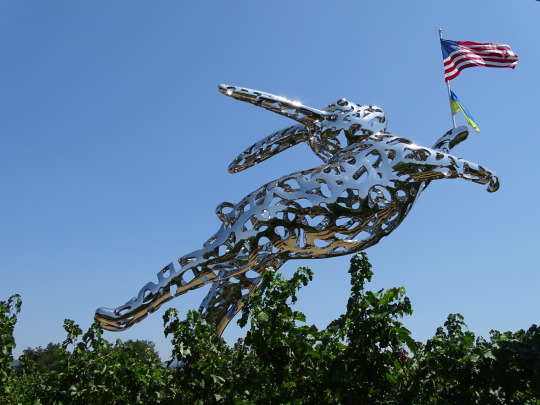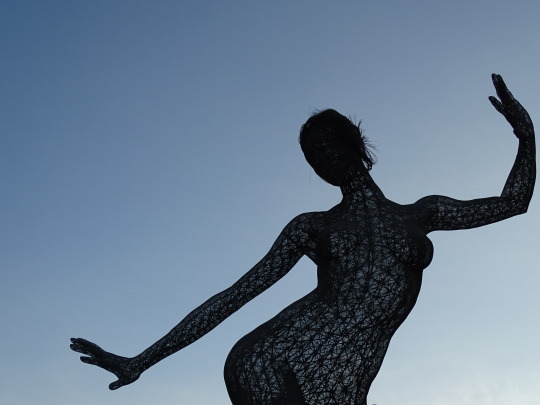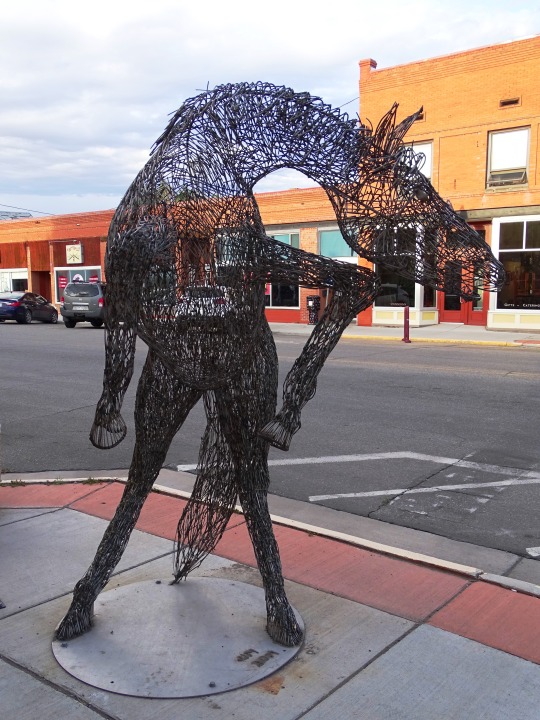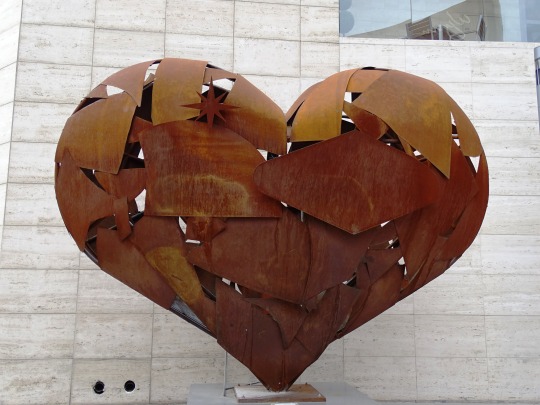#kasia polkowska
Explore tagged Tumblr posts
Text

Kasia Polkowska
Polish Women Artists #sztukakobiet @abwwia
Meet the Artist: My name is Kasia Polkowska. I am a multidisciplinary artist. My current location is Pagosa Springs, a small mountain town nestled in the San Juan Mountains. I live in this beautiful part of Sounthern Colorado with my life and creative partner Kyle and our two young sons, Ethan and Wesley.
Biography: I was born in Warsaw, Poland in 1983. When I was 9, my mom, 2 sisters and I emigrated to the United States. I grew up in Northern New Jersey where I completed primary school and graduated High School. In 2002, I moved to Brooklyn, New York to study Art at Pratt Institute. Additionally I studied abroad at Southern Cross University in Lismore, Australia which I chose specifically for the opportunity to connect more closely to nature. In 2006, I graduated from Pratt with a BFA. For the next 4 years, I enjoyed the city life, living in Park Slope in Brooklyn where I continued my exploration in art. Source ans more Artist's website : www.kasiapolkowska.com
As first seen via Mon oeil et le tien FB @folkmania
6 notes
·
View notes
Photo










International Sculpture Day
International Sculpture Day is observed on the last Saturday of April every year and this year, it falls on April 29. It is an internationally recognized holiday that commemorates the art of sculpture and sculpted works. Sculptures are a type of visual art that is three-dimensional. Stone sculptures have been proven to last significantly longer than other works of art made of perishable materials, and they account for the vast bulk of all surviving non-pottery art from ancient cultures to this day. Sculptures have always been a major component of religious devotion in many cultures, and enormous sculptures were commonly used to represent religion or politics until recently. The ancient Mediterranean, India, and China, as well as various cultures in Central and South America and Africa, have the most surviving sculptures.
History of International Sculpture Day
The first undisputed sculpture pieces came from the Aurignacian culture in Europe and southwest Asia, which was active at the start of the Upper Paleolithic period. This culture developed well-crafted stone tools, pendants, ivory beads, and other forms of art. They are also attributed to being the first to create cave art and three-dimensional figures.
The Löwenmensch, found in Germany’s Hohenstein-Stadel area, is an anthropomorphic figure carved from mammoth ivory. It is believed to be one of the oldest known uncontested examples of figurative art, standing at 0.9 inches tall. Most prehistoric art that has survived to this day is movable sculptures found throughout central Europe.
The Swimming Reindeer from around 13,000 years ago is one of the greatest Upper Paleolithic Magdalenian bone carvings, however, it is outnumbered by engraved pieces, which are sometimes considered sculptures. The Tuc d’Audoubert caves in France, where a talented sculptor used a spatula-like stone tool and his fingers to build a pair of large bison against a limestone rock tens of thousands of years ago, are home to two of the world’s largest prehistoric sculptures.
Much of the figurative sculpture in Europe at the beginning of the Mesolithic era has been greatly reduced. These sculptures have remained less of a common element in art other than relief decoration of practical objects until the Roman period, despite works such as the Gundestrup cauldron from the European Iron Age and the Bronze Age Trundholm sun chariot.
The Mesopotamian conquest, as well as much of its surrounding territory by the Assyrians, created a larger and wealthier state than was previously usual in the region, with particularly grandiose art in palaces and public places, clearly an attempt to match the glory of the Egyptian empire art. The Assyrians created their sculptures in great numbers using easily carved stones from Northern Iraq.
International Sculpture Day timeline
800—721 B.C The Assyrian Lamassu is Created
The Assyrian gate guardian sculpture, Lamassu, is created.
1513—1515 Michelangelo’s Moses Sculpture is Created
Michelangelo creates the sculpture of Moses sometime during these years.
1793 Crucifixion of Jesus Christ Sculpture is Created
The Spanish sculpture of the Crucifixion of Jesus Christ is made from wood and polychrome.
1998 Angel of the North Sculpture is Created
Sculptor Antony Gormley creates the sculpture of the Angel of the North.
International Sculpture Day FAQs
Which country is famous for sculpture?
The Western sculpture tradition originated in ancient Greece, and the country is well-known for producing great masterpieces during the classical period. During the Middle Ages, Gothic sculpture expressed the Christian faith’s agonies and emotions.
Does the date for International Sculpture Day change?
Yes. The date for International Sculpture Day is the last Saturday of April every year.
Where did sculptures originate?
The earliest sculpture samples belonged to the Aurignacian culture, which was in Europe and southwest Asia and was active at the beginning of the Upper Paleolithic period.
International Sculpture Day Activities
Visit a museum of sculptures
Make your own sculpture
Share on social media
International Sculpture Day is an excellent reason to visit any of the many sculpture museums and historical sites that feature beautiful sculptures. This is also a chance to learn more about the history of sculptures and their sculptors.
You can seize this opportunity and spark your creativity by building your very own sculpture using available and sustainable materials. You can create something meaningful that you can put on display in your home.
Use the hashtag #InternationalSculptureDay to share all of your activities for International Sculpture Day on social media! Take as many pictures as you can and tag your friends!
5 Interesting Facts About Sculptures
Sculpture is three-dimensional
There are various materials for sculpting
Sculptures have cultural and religious origins
There are two major types of sculptures
Stone sculptures are the most durable
A sculpture is a three-dimensional visual art, which makes it all the more “realistic.”
Unlike in the past, when sculpting materials were only limited to stone, bronze, and a few others, modernism has changed the order of things and a variety of materials can be used for sculptures.
Most prehistoric sculptures were born out of a reference to cultural, religious, and political themes.
There are two major types of sculptures which are “statues” and “relief” sculptures.
Most of the prehistoric sculptures and other art forms are stone sculptures.
Why We Love International Sculpture Day
Sculptures tell us stories
Art relaxes the mind
It is food for the soul
Most sculpture works have a story to them; either of religious, cultural, or political origin. International Sculpture Day allows us to learn about the history of sculptures and the artists who created them.
Creating art relaxes the mind. It allows people to showcase their passion by doing something they love.
Ever seen a sculpture or other work of art and felt so… filled? Exactly. Viewing beautiful art pieces is like food for the soul.
Source
#Waiting on an Answer by George Lundeen#Bad Decision by Vic Payne#USA#Bunny Foo Foo by Lawrence Argent#Big Bill Murphy by Adam Skiles#Bliss Dance by Marco Cochrane#Satos Horse by Jim Johnson#Heartfullness Vegas by Katy Boynton#Trouvaille by Kasia Polkowska#Beliers by François-Xavier Lalanne#International Sculpture Day#29 April 2023#last Saturday in April#summer 2022#original photography#public art#travel#vacation
3 notes
·
View notes
Text

Philippians 2:3-4
King James Version
Let nothing be done through strife or vainglory; but in lowliness of mind let each esteem other better than themselves. Look not every man on his own things, but every man also on the things of others.
Filipenses 2:3-4
Reina-Valera 1960
Nada hagáis por contienda o por vanagloria; antes bien con humildad, estimando cada uno a los demás como superiores a él mismo; no mirando cada uno por lo suyo propio, sino cada cual también por lo de los otros.
#Kasia Polkowska Mosiac#Red Rose#Stained Glass#Philippians#Filipenses#Verso del dia#Verse of The Day#Dios#God#Jesus#Trinity is a false concept!#God is not a trinty!#Dios no es una Trinidad#Apostolic One God#Apostólico Pentecostal#Uno#United Pentecostal Church International#UPCI#Preach Truth!
4 notes
·
View notes
Photo

Kasia Polkowska
133 notes
·
View notes
Photo

#Repost @folt_bolt "I'm a multi-disciplinary artist who enjoys working in various mediums, creating colorful paintings, large outdoor sculpture as well as glass and ceramic mosaics. I studied fine art at Pratt Institute in New York City but my love of nature, diverse landscapes and environments has eventually led me all over the United States in search of inspiring vistas until I finally settled in Colorado over a decade ago. " Let me introduce you to @kasia_polkowska_art Find more about her on Folt Bolt blog: https://www.foltbolt.com/post/kasia-polkowska . . . #featuredartist #art #painting #painter #americanartist #colorado #mosaicartist #autumn #mountain #nature #naturelover #kasiapolkowska https://www.instagram.com/p/CkaK2RVIdZK/?igshid=NGJjMDIxMWI=
#repost#featuredartist#art#painting#painter#americanartist#colorado#mosaicartist#autumn#mountain#nature#naturelover#kasiapolkowska
0 notes
Photo

Kasia Polkowska | Trouvaille, a stained glass mosaic sculpture, 2018
source
0 notes
Photo

Just Pinned to Mosaic: Stained Glass Mosaic Grouting and Polishing by Kasia Polkowska http://bit.ly/2ENQSsi http://bit.ly/2EaHz4J
0 notes
Photo

""Matryoshka Doll" ,stained glass mosaic on plywood, 30" x 23", 2011"
Kasia Polkowska via submission.
2 notes
·
View notes
Photo

Kasia Polkowska
0 notes
Photo










Alamosa ARTscape
Alamosa is home to a public art program called ArtScape, which temporarily places sculptures in public downtown spaces. Workshop attendees viewed this program as a success and expressed a desire to build on it through expanding its current reach in the public ream. In addition, workshop attendees expressed a desire to identify funding necessary to establish a new program that would place local art into businesses. Through building on the existing success of the ArtScape program, workshop attendees viewed this as an opportunity to expand the presence of art in the community and enhance Alamosa’s sense of place.
Source
#Trouvaille by Kasia Polkowska#Sunflower Whirligig by Kyle Cunniff#public art#Fire and Water by Kirk Seese#Alamosa#downtown#Sisters by Huberto Maestas#Old Goat by Amyas Maestas#Satos Horse by Jim Johnson#Morning Swim by Amyas Maestas#mural#USA#Chicos and Capulin by David Montgomery#Forever in my Heart by James Cable#tourist attraction#architecture#landmark#summer 2022#Colorado#Mountain West Region#Alamosa ARTscape#art-on-loan outdoor public art exhibit
2 notes
·
View notes
Photo

Vermont Autumn, by Kasia Polkowska
90 notes
·
View notes
Photo










International Colour Day
International Color Day is celebrated every March 21, and we are going to show you how you can celebrate the day. Do you know that it has been 14 years since the idea for International Color Day was proposed by the Portuguese Color Association? International Color Day was created to celebrate color. The date was chosen as March 21, as it is the day of the equinox, which means the lengths of day and night are almost the same as the sun’s rays are straight on the equator. This day is celebrated by setting up exhibitions, science shows, and interactive programs for children, among other activities.
History of International Colour Day
Color has always made humans curious since the beginning of time. Aristotle believed that the colors came from heaven. He believed that the origin of all colors was black and white. However, it was in the 1660s when Issac Newton experimented with light and its different spectrums, that color became a topic of study. After 2000 years, Aristotle’s postulates were replaced by the ones Newton created. Johann Wolfgang von Goethe, a German novelist, playwright, and scientist argued that color was something that was perceived by individuals differently. He is well-known for his quote, “Colors are light’s sufferings and joy”. The distinction between primary and secondary colors was made by Jacob Christoph Le Blon.
In 2008, Maria Joao Durao, the president of the Portuguese Color Association, came up with a proposal to ‘Association Internationale de la Couleur (A.I.C.)’ for recognizing the importance of color and dedicating a day to it. In 2009, the proposal was accepted by the members. The date was chosen to be March 21 as it is the day of the equinox. Competitions, science fairs, art fairs, etc. are held to celebrate. In 2012, an art competition was held in Taipei, Taiwan for deciding on the logo for International Color Day. Hosana Yau of Hong Kong won the competition with his diagram of two circles that made an eye. Half of the circle consisted of rainbow colors and the other half was black. They represented light and darkness.
International Colour Day timeline
350 B.C. The Theory by Aristotle
Aristotle states that the origins of all colors is black and white and that colors came from heaven.
1704 The Discovery by Newton
In his book “Opticks,” Issac Newton describes the phenomenon of the spectrum of light.
2008 A Day for Color Is Proposed
The Portuguese Color Association proposes a day dedicated to color.
2009 The International Color Day
International Color Day is created for the sole purpose of celebrating color.
International Colour Day Activities
Participate in the events
Wear your National color
Share it on social media
Take part in the exhibitions and webinars that are held on International Color Day and learn new things. This can be particularly useful for kids.
Wear your national flag as a tee shirt or wrap the flag around you. Share your sense of patriotism even as you celebrate colors.
Let everyone know you're celebrating this day. Take pictures of you taking part in International Color Day celebrations and share them on social media.
5 Intriguing Facts About Colors
Blue is a favorite color
There’s a fear of color
Women see color better
Newborns see red first
The gray before dark is a phenomenon
The color blue is known to be the favorite of most people in the world.
The fear of color is called Chromophobia.
There are two X chromosomes in women, and that helps them see certain spectrums better.
Since the color red has the longest wavelength, it is the first color that a baby sees.
The gray we see the second we turn off the lights is called eigengrau.
Why We Love International Colour Day
It gives us a chance to appreciate color
It’s a day to engage family
It improves our general knowledge
We live in a colorful world. But sometimes, we forget to appreciate all the colors around us. This day is a reminder to be grateful for color.
This day gives us a chance to participate in events with friends and family. It brings families closer.
The exhibitions and science fairs held on this day are educational. This can be beneficial for the kids.
Source
#El Molino Central#Sonoma#The Buzz by Bobby Magee Lorenz#Denver#Fiori di Como_Flowers of Como by Dale Chihuly#mural#Bellagio - Las Vegas Luxury Resort & Casino#Paradise#Nevada#California#Alamosa#Colorado#Trouvaille by Kasia Polkowska#International Colour Day#International Color Day#InternationalColourDay#architecture#cityscape#public art#original photography#summer 2022#USA#vacation#travel#tourist attraction#21 March
6 notes
·
View notes

